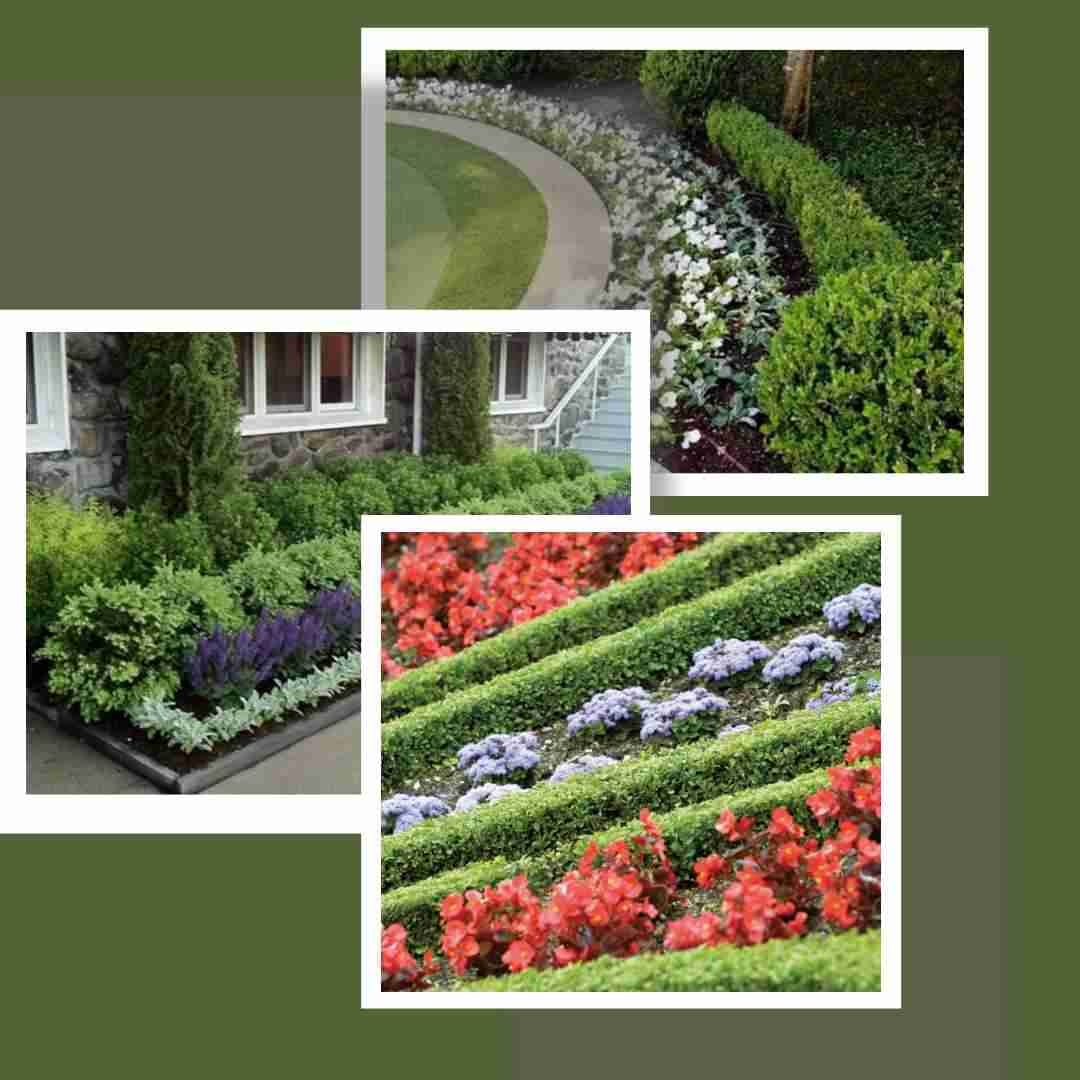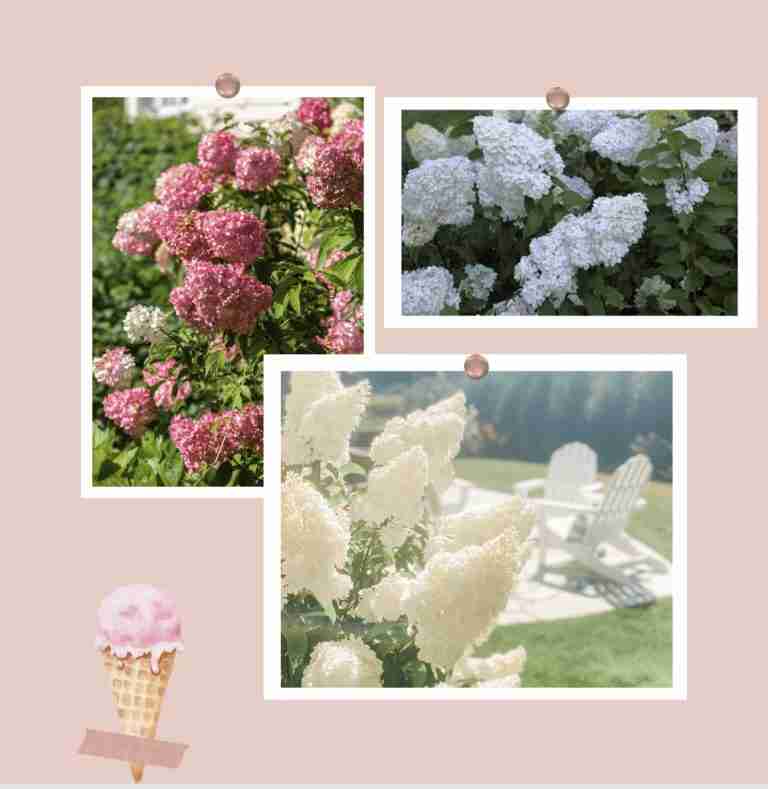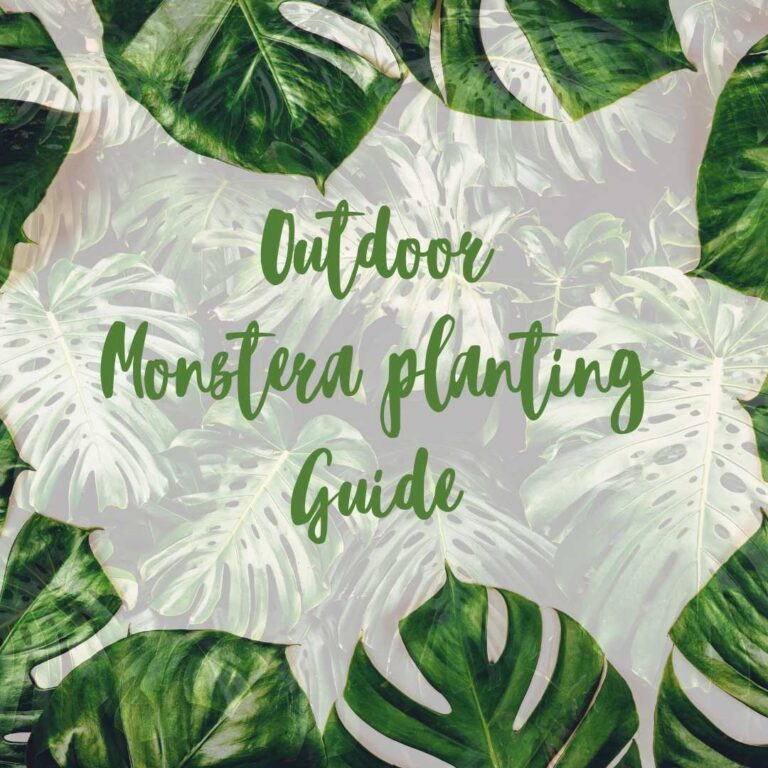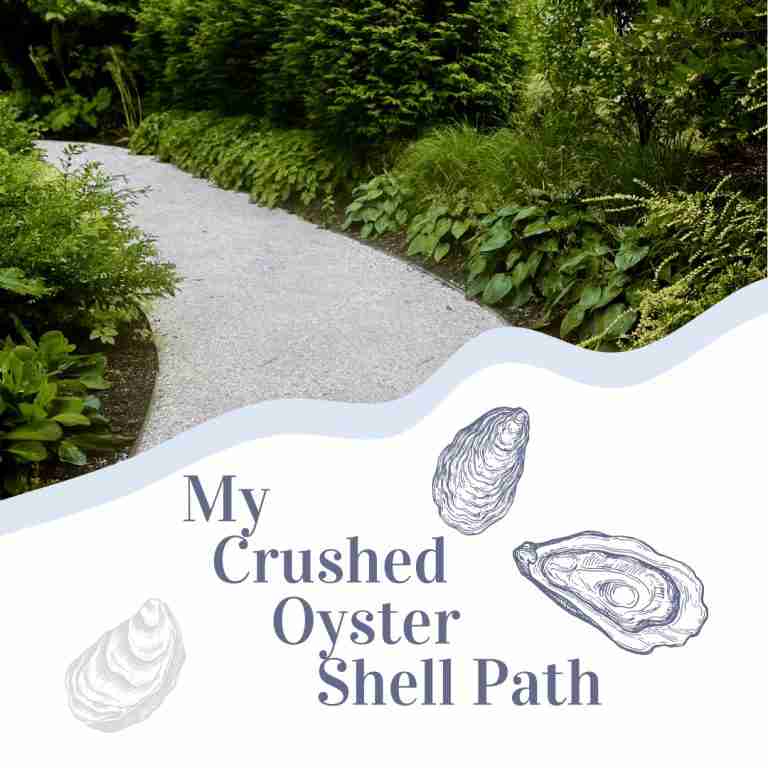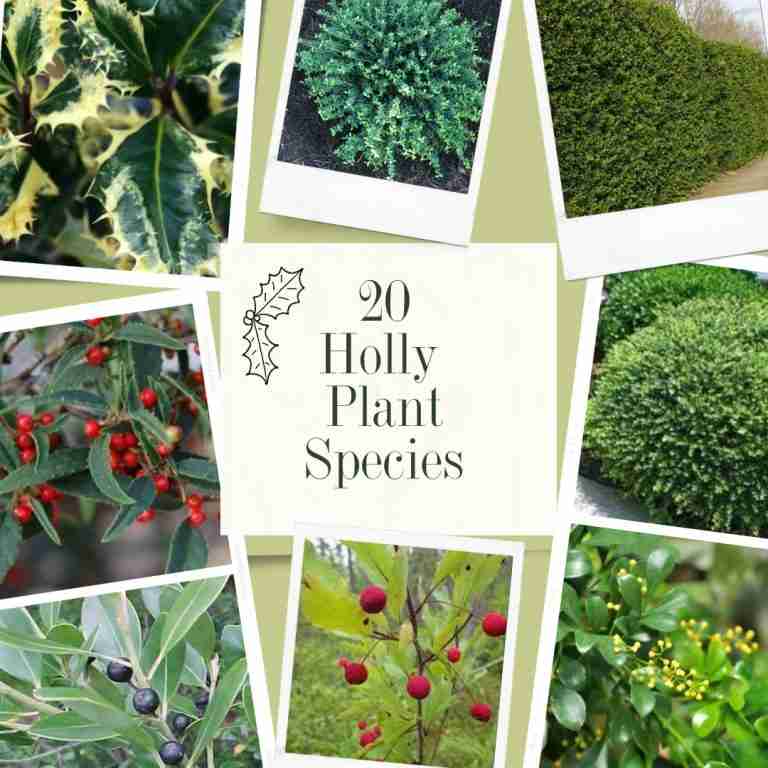14 best companion plants to grow in front of boxwoods
Imagine strolling through a well-manicured garden, its pathways lined with neatly trimmed hedges exuding an air of timeless elegance. In this post, we share the 14 best companion plants to grow in front of boxwoods.
The best companion plants include a list of perennials and annuals to plant with boxwoods. There are so many perennials and annuals to plant in front of boxwoods. Boxwoods make an ideal backdrop for textured and flowering plants. We will list some of the top plants to plant in front of boxwoods that will pop.
For a tidy landscape, there is nothing – and I mean nothing – like the formal charm of the Boxwood. I admit, I am obsessed with boxwoods. The boxwoods provide a pretty green backdrop for any a colorful garden.
Add Charm To Your Landscape Design
If you are looking to add some charm to your landscape, consider incorporating boxwoods into your landscape design. We have some great boxwood landscaping for you. There are so many beautiful pathway designs and all of them pair well with boxwoods.
If you already have boxwoods planted and are looking for the ideal companion plants, we have you covered. There are many great choices of plants that work well in front of the green boxwood shrub.
The Best Companion Plants That Work In Front Of Boxwoods
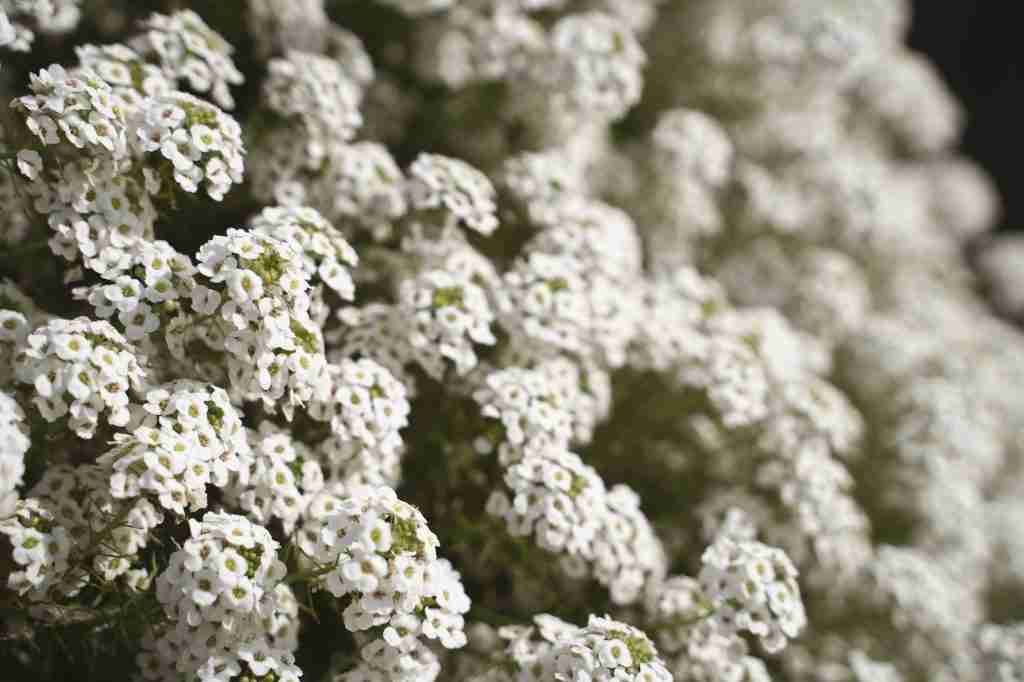
Perennial Plant Choices To Plant In Front Of Boxwoods
1. Sweet Alyssum
Sweet Alyssum is technically a perennial in most areas. It grows low and over sizeable areas, making it ideal for cover planting and matt landscaping, and it will look fantastic perennial grown in front of boxwoods.
This perennial has an abundance of flowers may entirely blanket the ground to create a wealth of color and contrast. It is one of the best companion plants to plant in front of boxwoods. Grows 3-10 inches tall and flowers in Spring and fall. Sweet Alyssum is a are great perennials to plant with boxwoods.
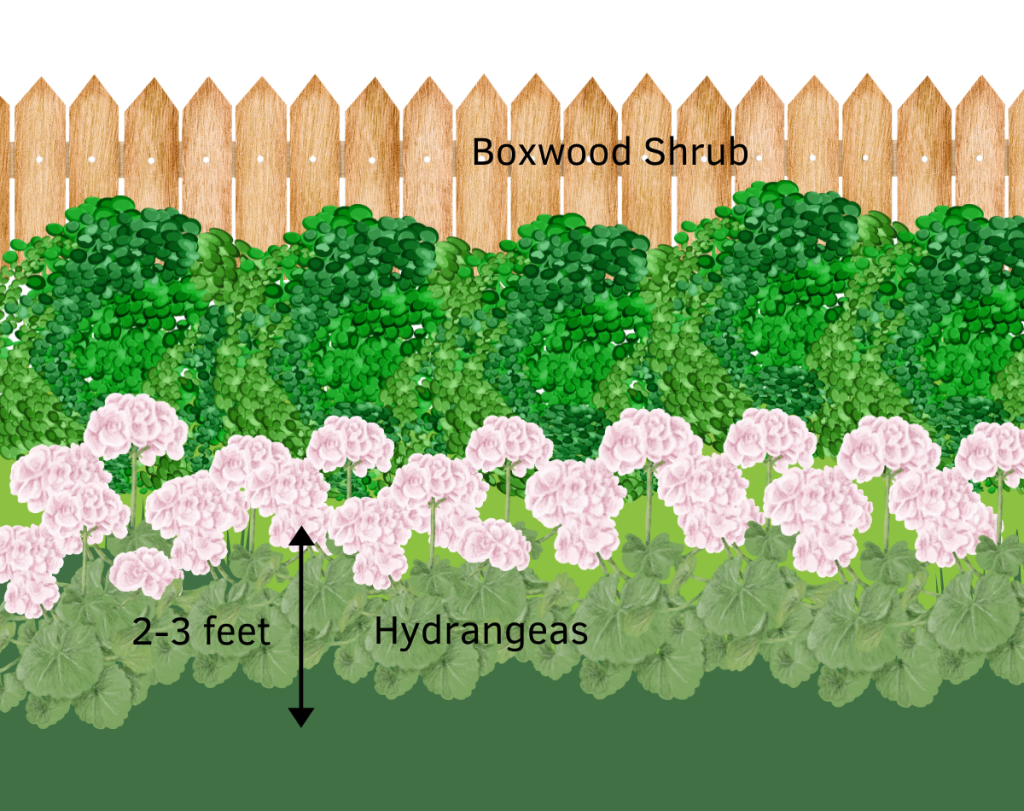
2. Hydrangeas
My favorite companion plants to grow in front of boxwoods are hydrangeas. Hydrangeas are a classic companion for boxwoods. Depending on the type of boxwoods you have planted, planting hydrangeas in front or behind boxwoods is the class Hampton look I adore. If you are looking for color, consider planting boxwoods with the perennial hydrangea.
I love hydrangea shrubs because they are relatively low-maintenance. Their vibrant flowers come in an array of colors (white, pink, purple, and blue) that contrast beautifully with evergreen boxwoods. Pick a smaller variety, like smooth hydrangeas, to maintain balance in your landscape.
Shopping for hydrangeas? Get the scoop on every popular hydrangea right here.
When selecting hydrangeas to complement your boxwoods, consider the wide range of varieties available. Opt for a variety that will grow to a height shorter than your boxwoods, ensuring a harmonious balance in your garden.
If you are looking for a hydrangea that looks fabulous behind a boxwood hedge, check out one of my favorites: The Vanilla Strawberry Hydrangea Shrub.
- Water: Give your hydrangeas 1 inch (2.5 cm) of water per week.
- Sun: Plant your hydrangeas in a partially shaded location.
- Soil: Hydrangeas can adapt to poor soil conditions, but they thrive in rich, acidic soils.
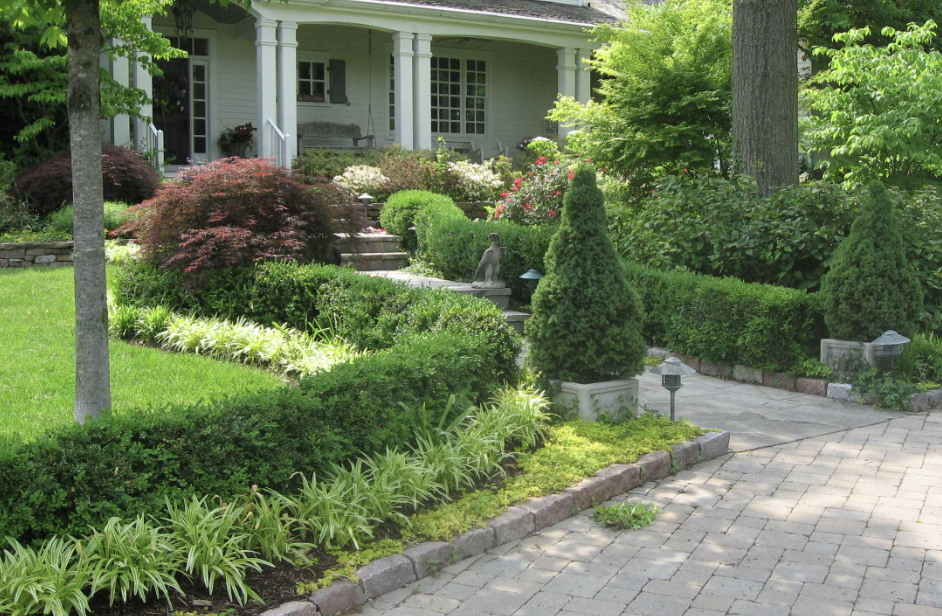
3. Liriope Muscari
Showy lilac-blue flower spikes on violet-flushed stems, which rise from the dense, tufted clumps of leathery, dark green foliage. Liriope plants do best in a part shade location, though they also will tolerate full sun well and will even survive in almost full shade. In warmer climates, these plants appreciate some afternoon shade.

4. Lady’s Mantle (Alchemilla mollis)
Lady’s Mantle is a common perennial. This plant is cherished for its captivating foliage rather than its blooms. The exquisite, ruffled leaves create a striking contrast with the delicate, rounded leaves of boxwood, imbuing your garden with a sense of tranquility and harmony.
This is an ideal perennial to plant in front of boxwoods because its average height is between 8 to 12 inches. These plants exude an air of elegance, enhancing the beauty of your garden design.

5. Astilbe
There are many Astilbe (False Spirea) cultivars with spiky blooms in white, pink, red, and purple. Some varieties bloom earlier than others, allowing you to create an astilbe garden that will last throughout the summer. Cultivars range in height from 8 to 20 inches.
Astilbes bright colors are an ideal perennial to plant with boxwoods because of texture and color.
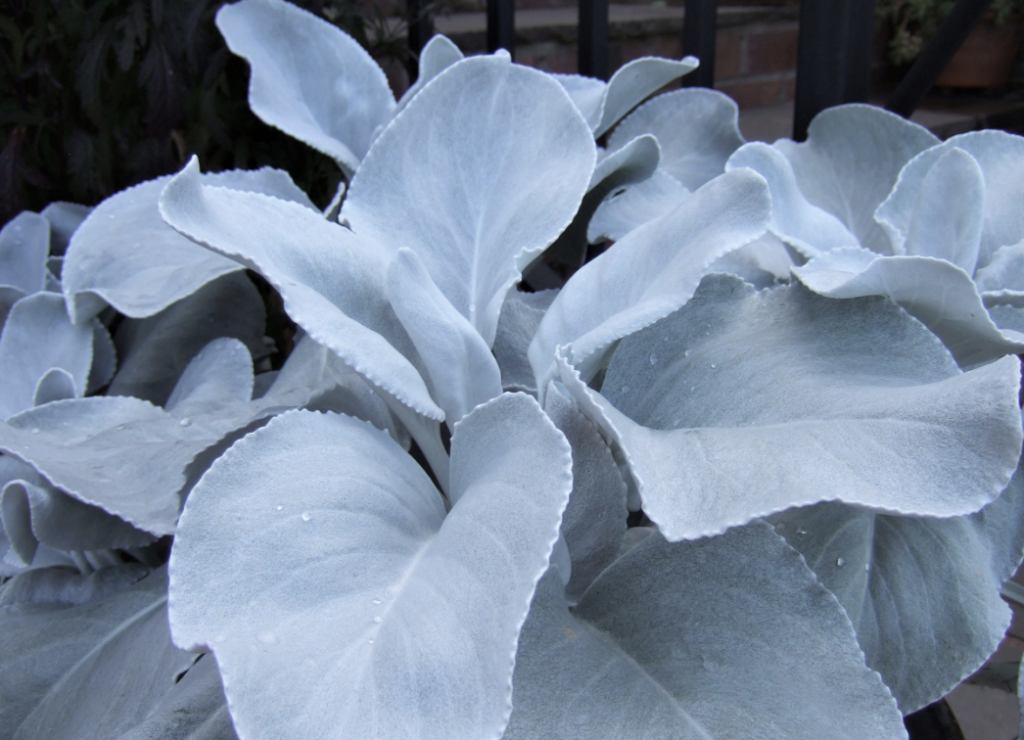
6. Angel Wing aka Senecio
My neighbor planted these lovely perennials in her yard and I loved them so much I added them to mine. Angel wings look fabulous planted in front of boxwoods because of the color contrast. The textured bright white/gray foliage pairs well with the dense green boxwood.
A striking new foliage plant with large, silvery white leaves which have a soft, downy texture. Will make an eye-catching feature for a border or patio pot where it will thrive in a hot, sunny spot. It quickly forms a good-sized clump and will become tolerant of drought once established. Angel wing plants are great companion plants for boxwoods.
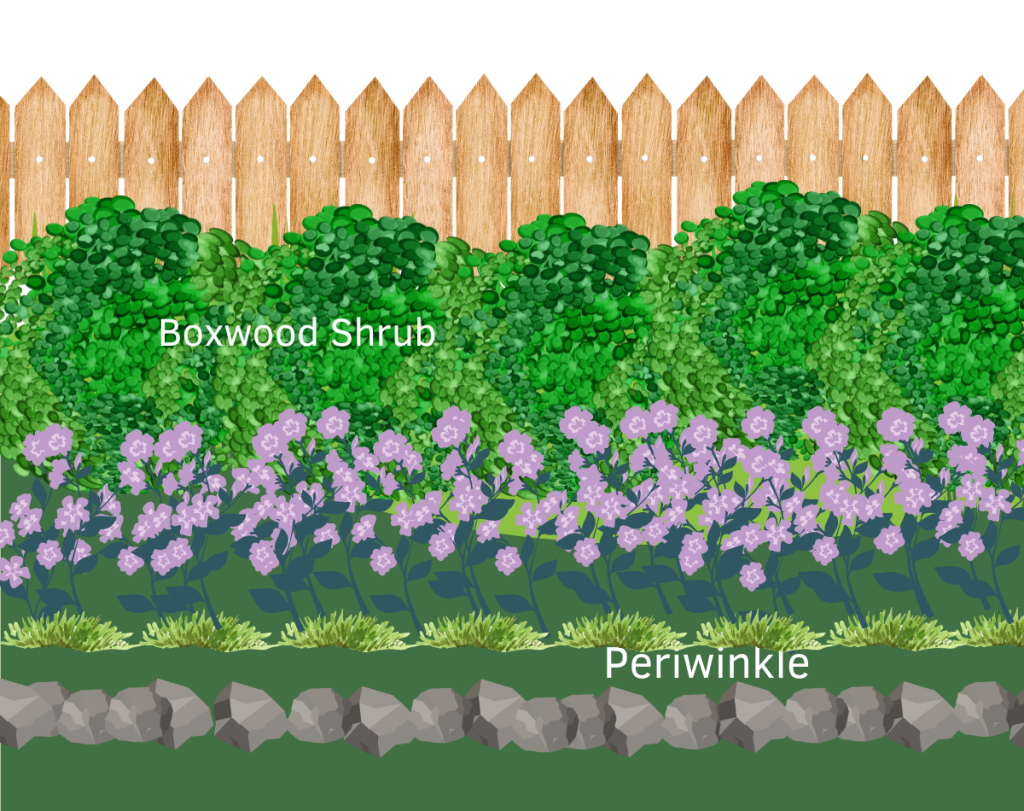
7. Periwinkle
Enhance the beauty of your boxwoods with a vibrant carpet of periwinkle. Also known as vincas, these heat-tolerant plants boast stunning pinwheel-like flowers in shades of red, pink, purple, or white.
This perennial is an evergreen ground cover growing low to the ground at 3-6 inches. Periwinkle adds a burst of color to your monochromatic landscape by planting periwinkles in front of your boxwoods. Remember to water them regularly, allowing the topsoil to dry before the next watering.
When planting, place your periwinkles in a partially shaded to full shade area to prevent their leaves from yellowing under intense sunlight. Let periwinkles grace your garden with their vibrant blooms and bring life to your landscape.
Check out the list of the top 16 stunning shade garden perennials.
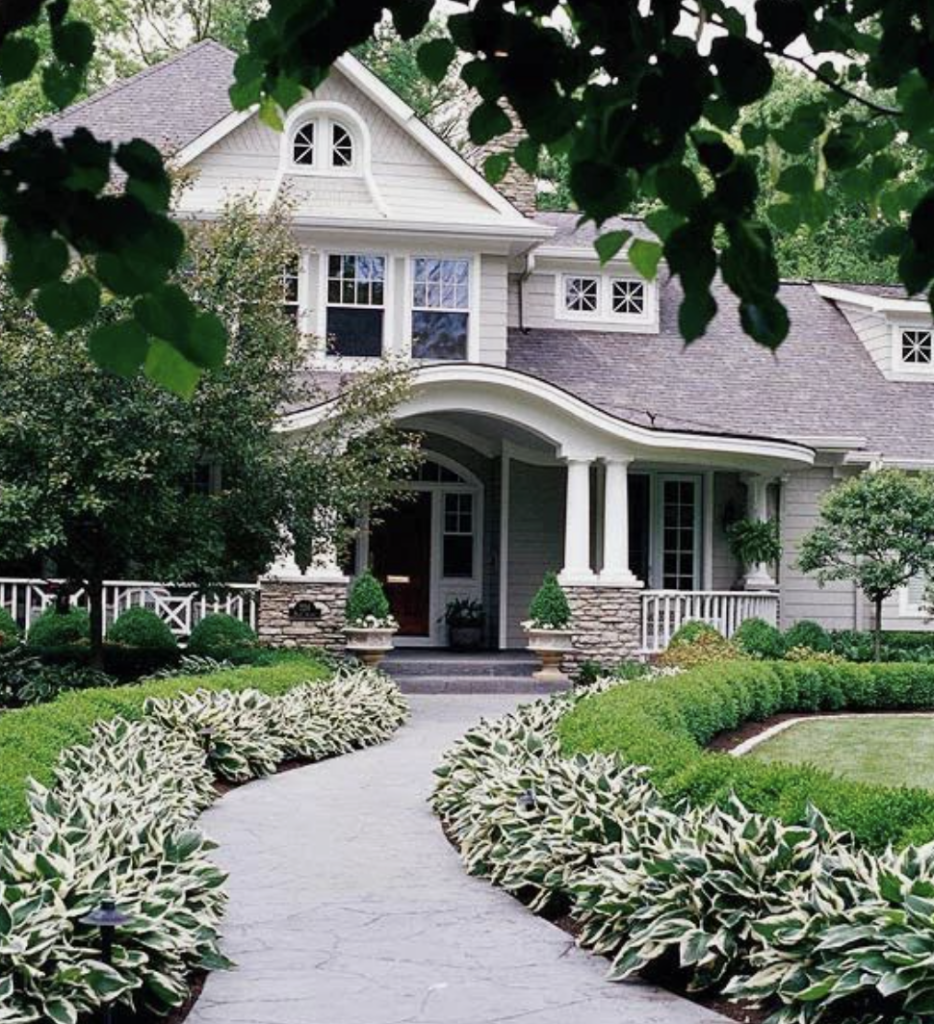
8. Hosta
If your boxwoods are planted in the shade, hostas area great companion plants to grow in front of your boxwoods. Hostas are perennials and come back every year and look great planted in front of mature boxwoods.
Pair your boxwood shrubs with shade-loving hostas for a harmonious garden. Unlike boxwoods that can overshadow and harm other plants, hostas thrive in shady areas! With leaves in green, gold, and blue shades, hostas can adapt to different light levels, becoming lighter with increased sunlight.
Plant your hostas in the spring, spacing them 1-4 feet apart to provide ample room for growth. Keep their watering routine in check by providing 1 inch (2.5 cm) of water per week, ensuring deep and infrequent watering. For optimal soil conditions, opt for rich, well-draining soil with added compost or aged manure to enhance its organic content.
Hostas prefer dappled shade but can tolerate deep shade with less than 4 hours of sun exposure per day. Create a balanced and vibrant garden by combining boxwoods and hostas in your landscape.
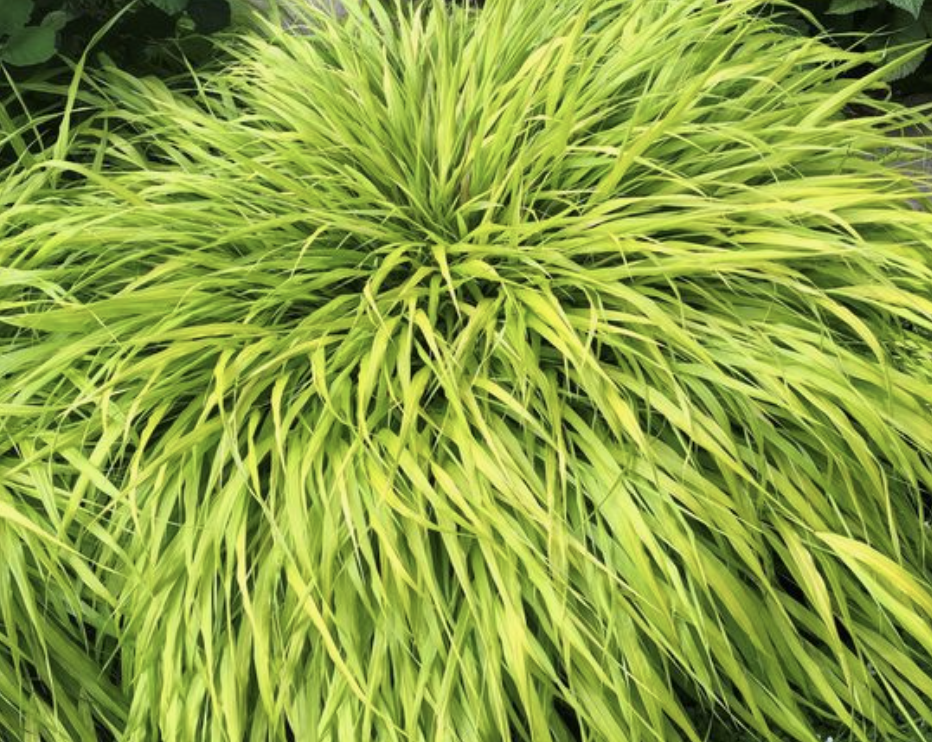
9. Japanese Forest Grass
So beautiful! Japanese forest grass is a great option as a companion plants to grow in front of boxwoods. Keep in mind that this grass is not evergreen and pop back up in your garden in early spring.
These flowy ornamental perennials plants look gorgeous planted in front of boxwoods. The ornamental grasses are slow-growing and require little extra care once established. The plants are semi-evergreen (depending on where you live; some may die back over winter) and show best in a partial shade. Hakonechloa Macra Gold is bright green and stunning.
Boxwoods can be used for structure, focal points, hedges, and topiaries in both formal and whimsical layouts.
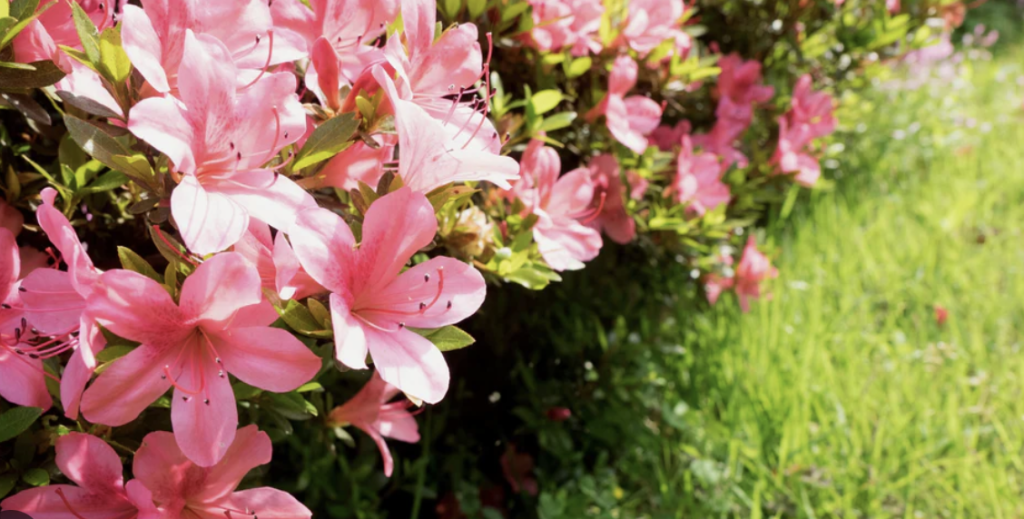
10. Azaleas
Dwarf azaleas are a low-maintenance subspecies of traditional azaleas (part of the Rhododendron family). This subspecies is shorter than traditional azaleas, reaching heights of around three feet, making them perfect for small gardens. Azaleas are often great companion plants for boxwoods.
Here are some of the most popular dwarf azalea varieties to add color to your garden:
- ‘Autumn Angel’: These flowering shrubs feature stunning white blooms that glow to life in the morning light. ‘Autumn Angel’ has light green leaves and flowers from spring to fall.
- ‘Autumn Cheer’: This cultivar blooms light pink blossoms from spring to fall and attracts butterflies and hummingbirds to your garden.
- ‘Autumn Fire’: These dwarf azalea shrubs have fiery red flowers with semi-doubled petals. Its deep green foliage turns purple during the winter.
- ‘Autumn Lilac’: This cold-hardy cultivar blooms with lavender flowers flecked with darker purple spots. They grow to a mature height of feet tall with a three-and-a-half-foot-wide spread.
- ‘Gumpo White’: This cultivar blooms to a height of two feet tall. It has bright white flowers speckled with red spots, giving your garden additional color interest.
- Rhododendron ‘Patty Bee‘These little bitty rhododendrons have small leaves and will grow 2 – 3 ft. wide but only one ft. tall. The leaves are very small, as are the flowers are a soft yellow. Even when not on bloom these mini rhododendrons are sweet as can be.
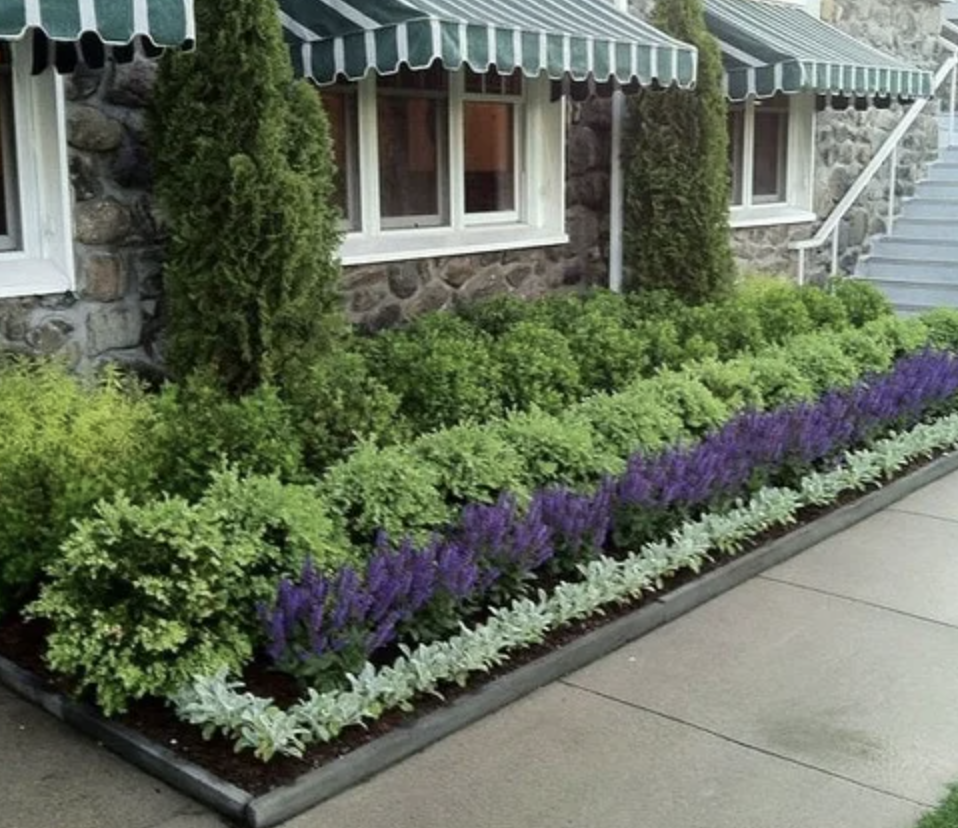
11. Lavender
To create a serene ambiance by planting English lavender in front of your boxwoods. English lavender is a fantastic choice because it doesn’t need as much sunlight as other lavender varieties.
This perennial is pretty when grown in front of boxwoods. With its ideal size (2-3 feet tall, 2-4 feet wide), it complements boxwoods perfectly. Plus, its aromatic purple flowers emit a calming fragrance. For a warm and inviting entrance, consider planting them near your front door or along your walkway.
Types Of Annual Flowers To Plant With Boxwoods
12. Little Princess Spirea
If you are looking to plant annual flowers, then consider the little princess spirea to grow as a companion plant in front of your boxwoods.
Enhance your garden with the charming Little Princess Spirea (Spirea japonica ‘Little Princess’). This delicate beauty complements boxwood perfectly and reaches a height of 3 feet. For an abundance of blooms, simply snip off the fading pink flowers. Watch as this lovely spirea adds a touch of elegance to your outdoor space. Plant in the sun.
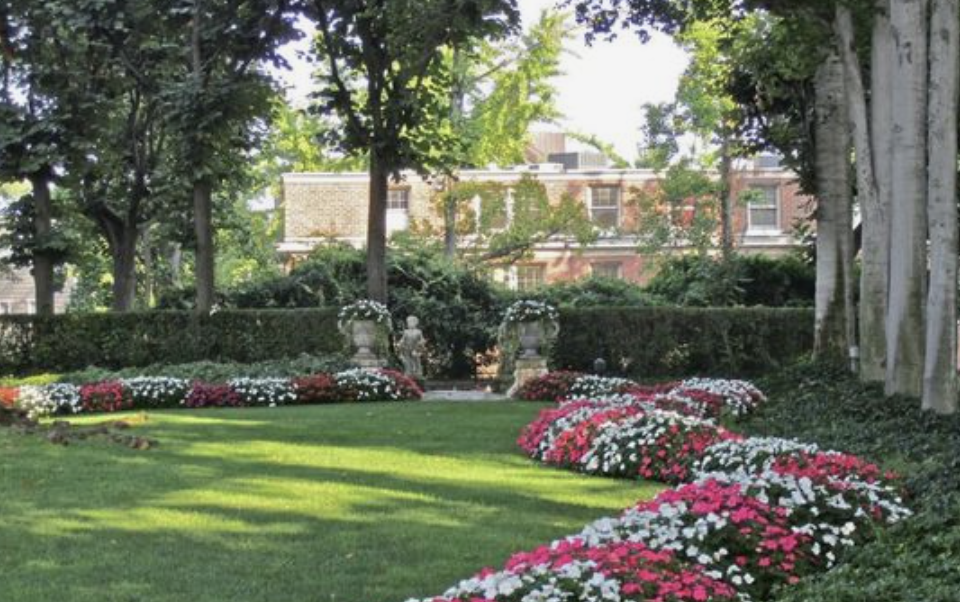
Photo from goodlifeofdesign.blogspot.com
13. Impatiens (Touch-me-not)
Impatiens are one of my favorite annuals to plant in the shade. These bright and cheerful annuals that can light up any dark and shady part of your yard with their colorful flowers. Because of that, they’re among the most popular bedding annuals around. Ranging in color, these classic shade-lovers are sure to add appeal and beauty to flower beds.
Impatiens (annuals) look so pretty grown in front of boxwoods because they lay a beautiful foundation. Great companion plants!
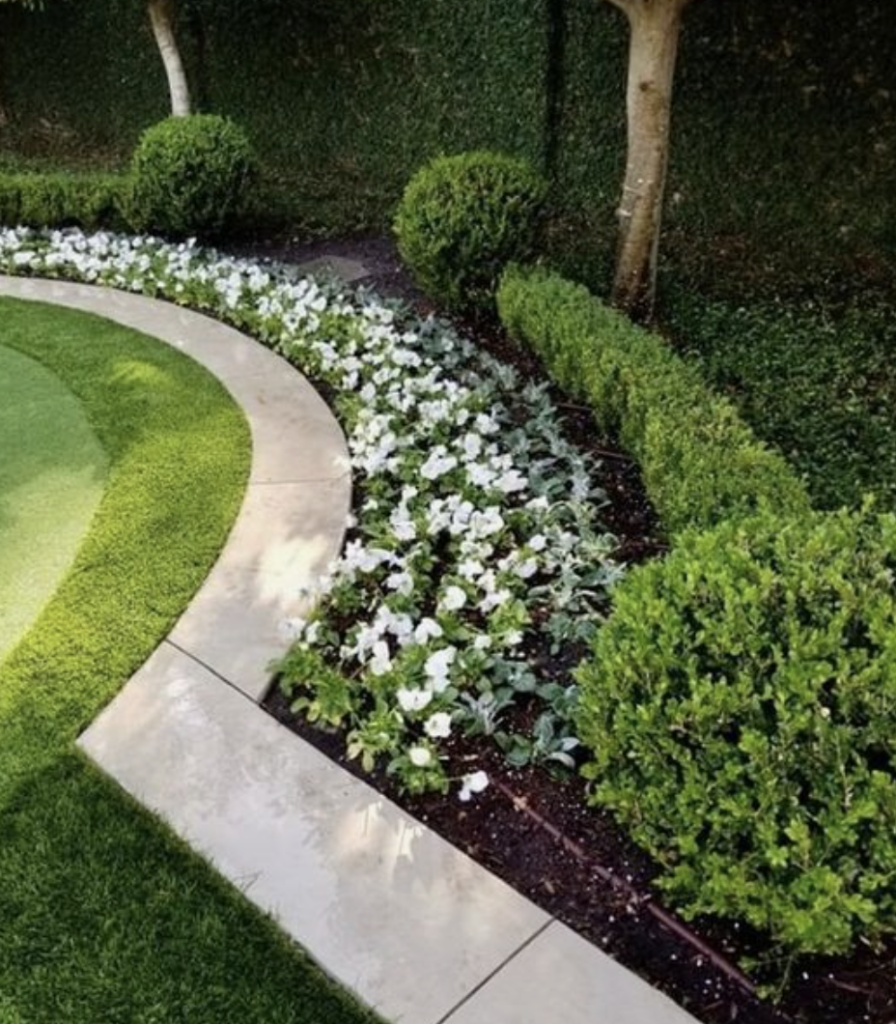
14. Petunias
There are hundreds of varieties of petunias on the market. They come in all colors and ideal for the gardener for use in a range of garden designs. Double and single blooms offer a selection of solid and multi-colored flowers.
Look at the photo above to see how beautiful these white petunias look as companion plants to grow in front of boxwoods. Petunias need ample sunshine.
Reasons to Plant Boxwoods In Your Garden Landscape
Timeless Aesthetic Appeal:Boxwoods are synonymous with timeless beauty and elegance. With their dense and compact foliage, they bring a sense of order and formality to any garden design. Whether you opt for classic straight hedges or intricate topiary shapes, boxwoods add a touch of sophistication that never goes out of style.
There are over 20 popular types of boxwood shrubs for landscape design.
Vibrant Backdrop
Their lush green leaves provide a vibrant backdrop for colorful blooms and create a visually pleasing contrast against other garden elements. Boxwoods, with their timeless elegance, versatility, year-round charm, and low maintenance nature, have rightfully earned their place as the ideal evergreen shrubs. They add a touch of sophistication to any landscape while providing a solid foundation for creative design possibilities.
Linear boxwood hedges are a timeless and elegant addition to yard landscaping, offering a structured and formal look that enhances the overall aesthetic of any outdoor space.
Timeless Boxwood Hedge- The Perfect Backdrop
These hedges are created using tightly trimmed boxwood shrubs, which can be shaped into straight lines or geometric patterns, providing a clean and organized appearance. Linear boxwood hedges are versatile and can be used to define garden borders, create pathways, or add privacy to seating areas.
Their evergreen foliage ensures year-round beauty, while their low maintenance nature makes them a popular choice for homeowners looking to achieve a classic and polished landscape design.
Most Frequently Asked Questions about The Best Companion Plants for Boxwoods:
How Far Apart Should I Plant Plants in Front of Boxwoods?
A. This depends on the specific plants you’re using and the desired aesthetic. Typically, spacing plants about 1 to 2 feet apart in front of boxwoods works well to create a lush and balanced look.
Do I Need to Amend the Soil Before Planting in Front of Boxwoods?
It’s generally a good idea to test your soil and amend it if necessary to ensure optimal growing conditions for your plants. Adding organic matter like compost can improve soil texture, drainage, and nutrient levels.
1. Should I Choose Plants That Have Similar Sunlight and Water Requirements as Boxwoods?
Yes, selecting plants with similar sunlight and water needs as boxwoods will help create a harmonious and low-maintenance garden. This ensures that all plants in the area thrive under the same conditions.
2. How Tall Should the Plants in Front of Boxwoods Be?
The height of plants in front of boxwoods depends on your desired overall look and the size of your boxwoods. For a balanced appearance, consider plants that are shorter than the boxwoods or slightly taller but with a staggered arrangement.
3. Are There Any Plants That I Should Avoid Planting in Front of Boxwoods?
Plants with aggressive growth habits or invasive tendencies should be avoided to prevent competition and overcrowding. Also, plants that have different soil or light requirements may not thrive well together with boxwoods.
4. Do I Need to Consider the Color and Texture of the Plants When Planting in Front of Boxwoods?
Yes, choosing plants with complementary colors and textures can enhance the visual appeal of your garden. For example, pairing fine-textured plants with coarse-textured boxwoods can create an interesting contrast.
5. How Often Should I Water Plants in Front of Boxwoods?
Watering frequency depends on factors like weather conditions, soil type, and plant species. Generally, water plants deeply but less frequently to encourage deep root growth. Monitor soil moisture regularly and adjust watering as needed.
6. Should I Mulch Around Plants in Front of Boxwoods?
Mulching helps retain soil moisture, suppress weeds, and improve soil health. Applying a 2- to 3-inch layer of organic mulch around plants (while avoiding direct contact with boxwood stems) is beneficial.
Can I Plant Bulbs in Front of Boxwoods?
Yes, planting bulbs like daffodils or tulips in front of boxwoods can add seasonal color and interest to your garden. Ensure that the bulbs are planted at the appropriate depth and spacing according to their specific requirements.
Versatility Of Boxwoods
One of the greatest advantages of boxwoods is their versatility in garden design. They can be used to create defined borders, edge pathways, or establish structural elements in your landscape.
Boxwoods work well in both formal and informal garden styles, seamlessly blending with various architectural features. They serve as a unifying element that ties together different garden areas and adds a sense of cohesion to the overall design.

With their evergreen nature, boxwoods offer year-round interest in your garden. They maintain their vibrant green foliage throughout the seasons, ensuring a consistent backdrop for other plants.
Anchor Design Providing Structure
Boxwoods become an anchor in your garden design, providing structure and color even during the winter months when other plants may be dormant. This attribute is immensely valuable for crafting a garden that looks attractive and well-maintained year-round.
Low Maintenance Of Boxwoods
Boxwoods are known for their low maintenance requirements, making them an ideal choice for busy gardeners. Once established, they are relatively easy to care for, requiring minimal pruning and regular watering.
Boxwoods are also durable and adaptable to different growing conditions, including sun or shade, as well as various soil types. Their resilience and longevity make them a reliable investment in your garden design.
Privacy Screen
When strategically planted, boxwoods can act as a natural privacy screen, creating a secluded and tranquil atmosphere in your garden. Their dense foliage forms a barrier that shields your outdoor space from prying eyes, providing a sense of privacy and peace. Boxwoods can absorb sound, helping to reduce noise pollution and creating a more serene environment.
Evergreen Foliage of Boxwoods
Rich green foliage throughout all seasons. Boxwoods bring enduring beauty to any green sanctuary, whether formal or cozy, contemporary or classic.. Embrace the charm of boxwoods and let them transform your garden into a masterpiece that will stand the test of time.
Eight Types Of Boxwoods
Boxwoods are versatile and attractive shrubs that come in various shapes, leaf colors, and sizes. However, to ensure their thriving growth, it’s important to provide them with the right conditions. Here’s a breakdown of different boxwood varieties and their care requirements:
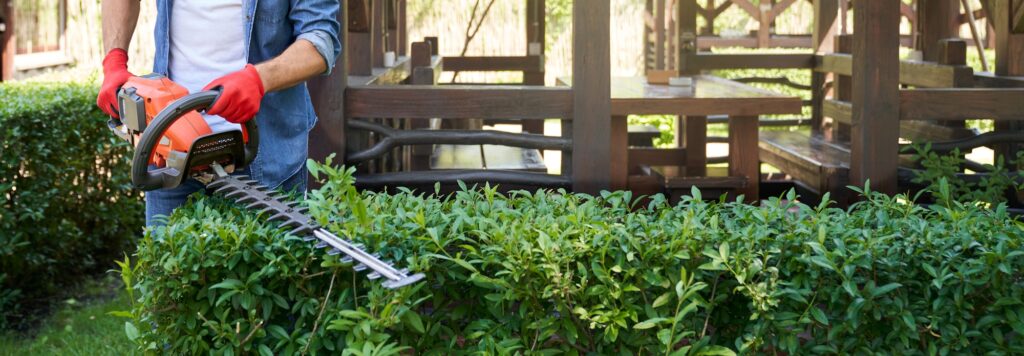
1. Dwarf English Boxwood
Ideal for spaces with morning sun, filtered light, or indirect light.Prized for dense, dark green leaves and compact growth habit.Requires consistent irrigation and a thick layer of organic mulch to protect shallow roots.Perfect for foundation beds, hedges, borders, and container planting.
You will see round boxwoods grown into geometric boxwood hedges. It’s a beautiful formal look.
2. Korean Boxwood
Tolerates and thrives in full sun.Slow-growing and compact, with small rounded leaves.Responds well to pruning.
3. Buxus Microphylls ‘Winter Green’
The “Winter Green” is a reliable Midlands variety, great for foundation beds with full sun exposure.
4. American Boxwood
Classic and popular choice, with a long history in the South.Dark green leaves, narrower than Korean varieties.Thrives in part shade, preferring morning sun and protection from afternoon heat. Requires drainage, consistent moisture, and specific fertilizer for acid-loving shrubs.
5. Wintergreen Boxwood
The Winter Gem is an ideal shrub for a formal garden. It takes to shearing and pruning well and can be a landscaping artist’s delight. It tolerates a wide range of sites and uses. New foliage emerges a lime-green color and transitions to a deep, glossy green. It turns a bronze color when exposed to direct winter sun, but it will quickly disappear in spring as temperatures increase and as fresh growth sprouts.
6. Common Boxwood
Common Boxwood, also known as American Buxus, has over 400 cultivars with a wide range of size, form, and variation in leaf color and shape. Some cultivars can actually grow quite large, so it’s important to note the cultivar’s maximum growth if using the plant in smaller locations.
A full-bodied boxwood well-suited for dense, low hedges. Foliage keeps its rich green color throughout winter. Develops a vigorous, rounded form if not pruned. A wonderful evergreen that will provide year-round, cold-hardy color and structure in the garden.
7. Green Velvet Boxwood
A full-bodied boxwood well-suited for dense, low hedges. Foliage keeps its rich green color throughout winter. Develops a vigorous, rounded form if not pruned. A wonderful evergreen that will provide year-round, cold-hardy color and structure in the garden.Grows 3-4 feet tall in full sun or part sun.
8. Green Mountain Boxwood
Vibrant and versatile, this evergreen shrub boasts bright green foliage that stays beautiful all winter. With its naturally cone-shaped habit, it’s perfect for topiary or as a stunning accent in containers or formal gardens.
When plan to create a captivating landscape with mass plantings, shaping a free-form or sculpted hedge. Enjoy full or partial sun exposure, and water when the top 3 inches of soil are dry. While its blooms may be inconspicuous, the foliage is the true prize. In its natural form, it grows to 5 ft. Tall and 3 ft. Wide.
Dwarf Boxwood Varieties:
Use them as natural groundcover, create low borders, or shape them into beautiful hedges and containers.
-North Star Boxwood stands out at 2 to 2.5 feet tall.
-Baby Gem Boxwood adds a perfect accent at 3 feet tall and wide.
-Wedding Ring Boxwood with its glossy foliage and lime-colored edges. Looking for compact charm?
-Green Pillow is your go-to, reaching just over a foot in height. These delightful dwarf varieties thrive in zones 5 through 8, bringing beauty and character to your outdoor space.
Consider planting boxwoods in planters. Boxwood planter ideas include planting annuals and other blooming flowers around loosely shaped boxwood globes in a planter.

